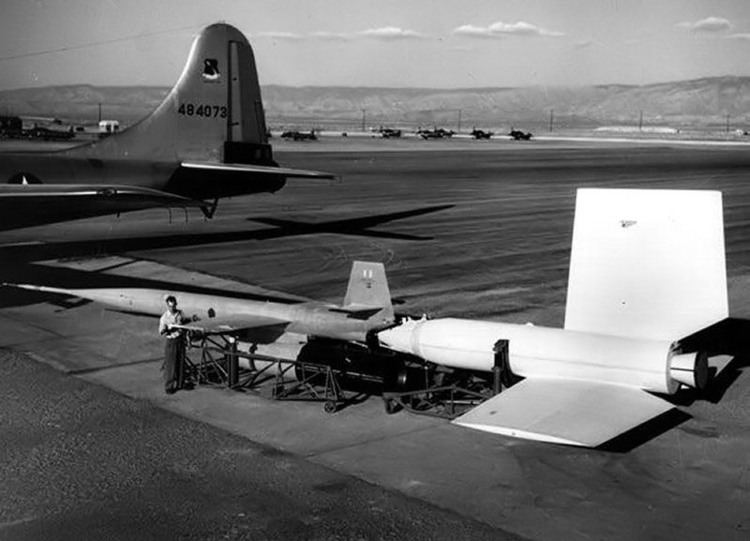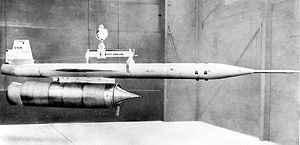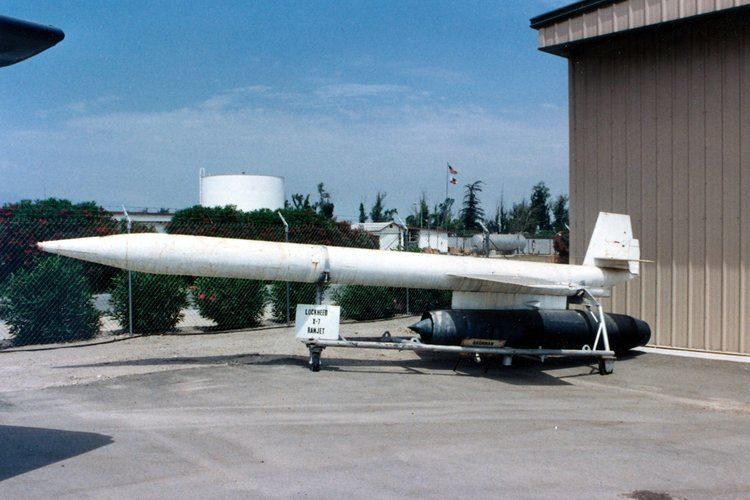Top speed 4,640 km/h Length 9.98 m | Wingspan 3.66 m Retired 1960 | |
The Lockheed X-7 (dubbed the "Flying Stove Pipe") was an American unmanned test bed of the 1950s for ramjet engines and missile guidance technology. It was the basis for the later Lockheed AQM-60 Kingfisher, a system used to test American air defenses against nuclear missile attack.
Contents

The aircraft is one of the lesser known designs by Kelly Johnson, who went on to become the creator of the SR-71 family of aircraft.

Design and development

The X-7 was carried aloft by a B-29 or B-50 Superfortress carrier aircraft. A booster ignited after launch and propelled the vehicle to a speed of 1,000 mph (1,625 km/h). The booster was then jettisoned, and the underslung ramjet took over from that point. The X-7 eventually returned to Earth, its descent slowed by multistage parachute. It descended in a vertical nose-down attitude. The nose was a long spike which penetrated the ground upon impact preventing damage to the rest of the airframe.

A maximum speed of 2,881 miles per hour (4,637 km/h), or Mach 4.31, was attained, setting a record for fastest air-breathing aircraft at the time. A total of 130 X-7 flights were conducted from April 1951 to July 1960.
The X-7 was unique in that it was constructed of steel, as opposed to the titanium used on later ramjets such as the more well known SR-71, and its predecessors, the A-12 and YF-12. The X-2 test aircraft preceded the X-7 by having Stainless steel wings, but its fuselage was composed of Nickel alloy. Steel was not widely used in aircraft until the later Mig-25 Foxbat.
The X-7 was also used to test HEF-2 and Hi Cal-3 zip fuel, which has a superior heating value of 26,500 Btu/lb. compared to hydrocarbon fuel with 18,400 Btu/lb.
Specifications (X-7A-1)
General characteristics
Performance
The A-3 variant was longer and narrower.
